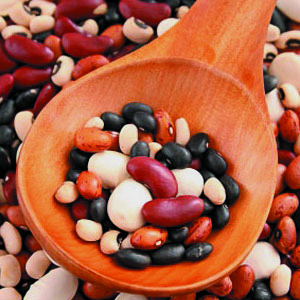 |
| Four or more cups of tea can lower risk of diabetes |
* Drinking one to three cups has little effect
* Four or more reduces risk 20%
* Four cups a day is British average
The British habit of tea-drinking can help lower the risk of Type 2 diabetes - but only if you drink four or more cups a day.
A study of European populations found that countries that drank four cups a day - the British average - had a 20% lower risk of developing the illness.
Tea drinking ranged from an average of none a day in Spain to four a day in the UK.
The study found that benefits seemed to be most obvious among heavy tea drinkers - drinking a mere one to three cups a day doesn't lower the risk.
A research team led by Christian Herder from the Leibniz Center for Diabetes Research at Heinrich Heine University Duesseldorf, Germany, said previous analyses showed tea consumption was associated with lower incidence of type 2 diabetes.
‘Obesity is a major risk factor for the development of type 2 diabetes, but dietary factors may also play a role. One dietary factor of interest is tea consumption.
'Tea consumption may lower the risk of type 2 diabetes by influencing glucose digestion, glucose uptake, and by protecting beta-cells from free-radical damage. This beneficial effect may be due to the polyphenols present in tea.’
Herder said, ‘Drinking at least four cups of tea per day was associated with a 20 per cent lower risk, whereas drinking one to three cups per day did not lower the risk of diabetes compared with non-tea drinkers.
But it was unclear if tea is associated inversely over the entire range of intake.
He wrote ‘Therefore, we investigated the association between tea consumption and incidence of type 2 diabetes in a European population.’
It was done in 26 centres in eight European countries, and consisted of 12,403 incident type 2 diabetes cases plus thousands of others without the disease.
Tea drinking ranged from an average of none a day in Spain to four a day in the UK.
Herder wrote: ‘Increasing our understanding of modifiable lifestyle factors associated with the development of type 2 diabetes is important, as the prevalence of diabetes is increasing rapidly.
‘In line with this, no association was observed when tea consumption was studied as continuous variable. This may indicate that the protective effect of tea is restricted to people with a high tea consumption.
* Four or more reduces risk 20%
* Four cups a day is British average
The British habit of tea-drinking can help lower the risk of Type 2 diabetes - but only if you drink four or more cups a day.
A study of European populations found that countries that drank four cups a day - the British average - had a 20% lower risk of developing the illness.
Tea drinking ranged from an average of none a day in Spain to four a day in the UK.
The study found that benefits seemed to be most obvious among heavy tea drinkers - drinking a mere one to three cups a day doesn't lower the risk.
A research team led by Christian Herder from the Leibniz Center for Diabetes Research at Heinrich Heine University Duesseldorf, Germany, said previous analyses showed tea consumption was associated with lower incidence of type 2 diabetes.
‘Obesity is a major risk factor for the development of type 2 diabetes, but dietary factors may also play a role. One dietary factor of interest is tea consumption.
'Tea consumption may lower the risk of type 2 diabetes by influencing glucose digestion, glucose uptake, and by protecting beta-cells from free-radical damage. This beneficial effect may be due to the polyphenols present in tea.’
Herder said, ‘Drinking at least four cups of tea per day was associated with a 20 per cent lower risk, whereas drinking one to three cups per day did not lower the risk of diabetes compared with non-tea drinkers.
But it was unclear if tea is associated inversely over the entire range of intake.
He wrote ‘Therefore, we investigated the association between tea consumption and incidence of type 2 diabetes in a European population.’
It was done in 26 centres in eight European countries, and consisted of 12,403 incident type 2 diabetes cases plus thousands of others without the disease.
Tea drinking ranged from an average of none a day in Spain to four a day in the UK.
Herder wrote: ‘Increasing our understanding of modifiable lifestyle factors associated with the development of type 2 diabetes is important, as the prevalence of diabetes is increasing rapidly.
‘In line with this, no association was observed when tea consumption was studied as continuous variable. This may indicate that the protective effect of tea is restricted to people with a high tea consumption.
News by Dailymail
Read current news at http://bbc-cnn-worldnews.blogspot.com











